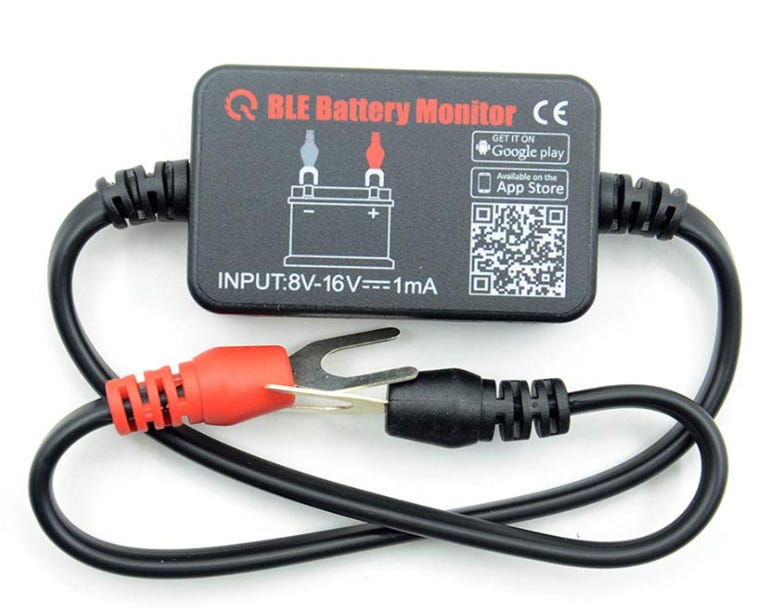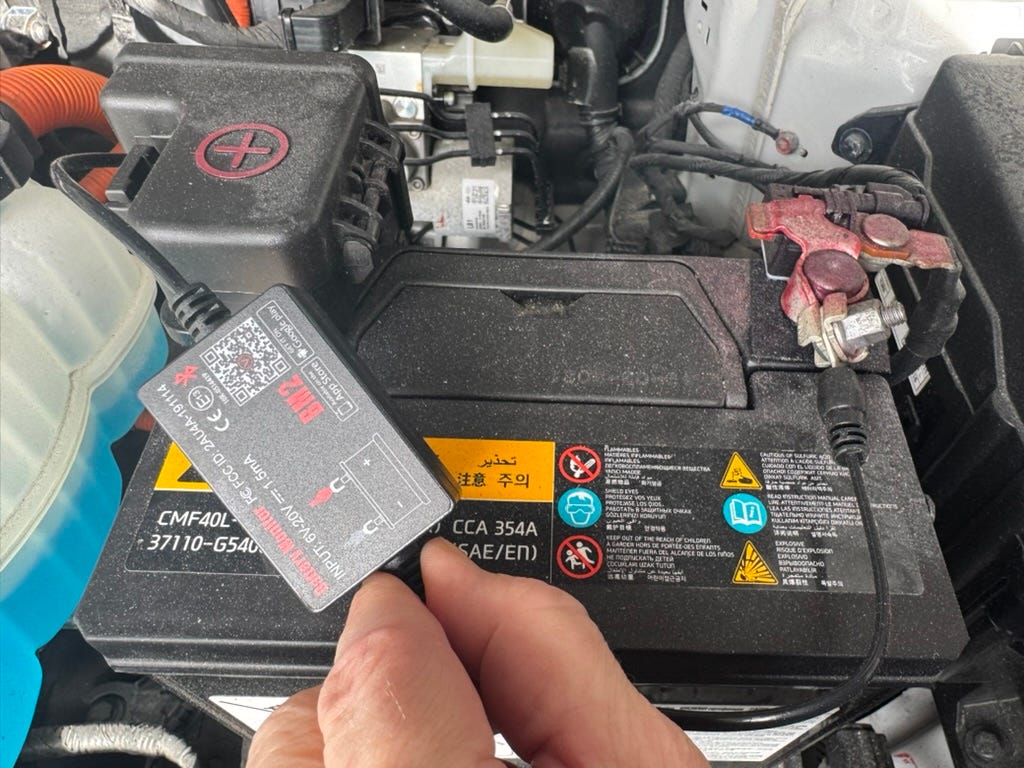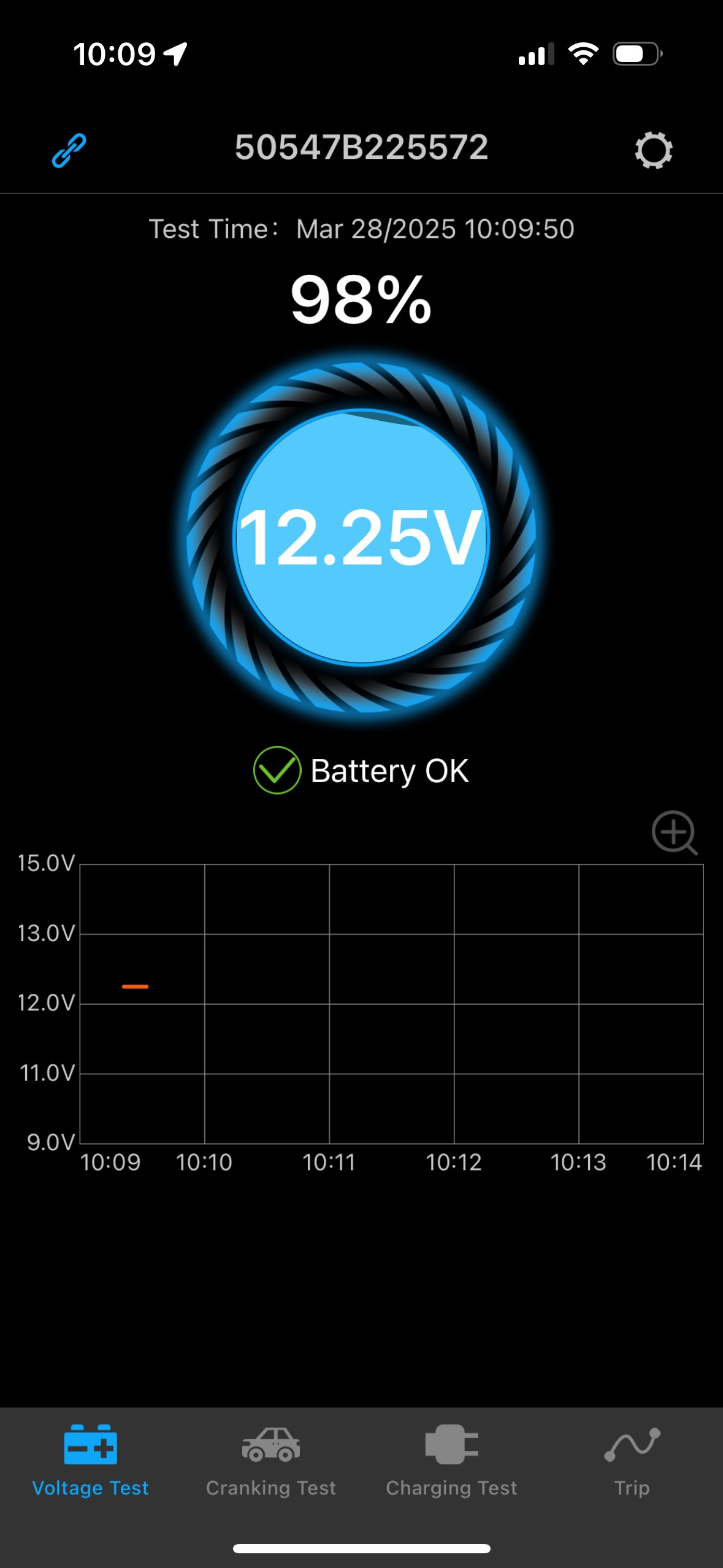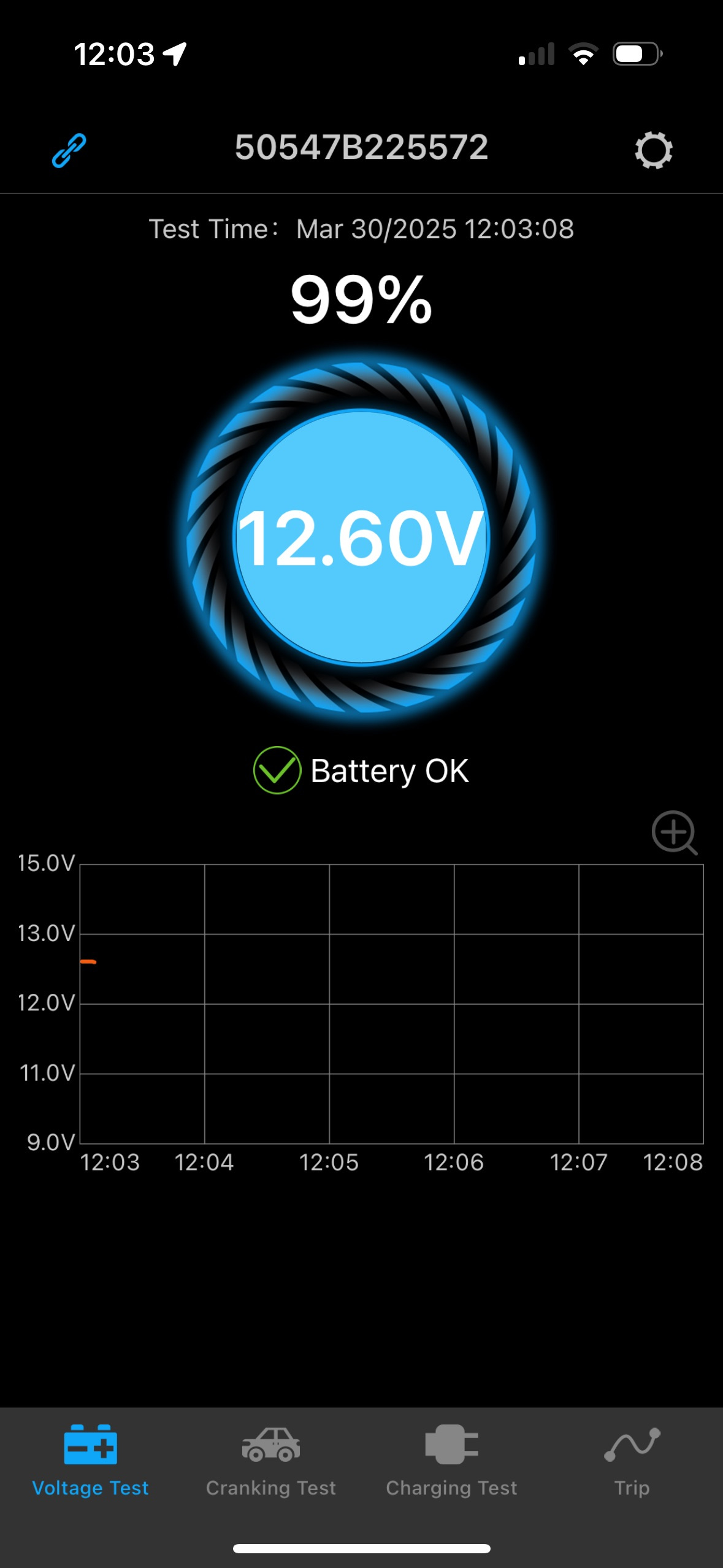Monitoring the Ioniq 12-volt Battery
Although EVs have a large high-voltage battery that powers the vehicle, they also still use a standard 12-volt battery that you find on ICE vehicles. When people ask me about EVs, they often ask questions about the large high-voltage battery due to fear of it failing. But that’s the wrong battery to be concerned with. The high-voltage battery will likely outlast the usable life of the car itself.
What can be a problem is the 12-volt battery, however. With an ICE vehicle, the 12-volt battery is primarily used to start the engine and run electronic components when the engine is not running, such as climate, audio system, lights, etc. When the car is running, all those things are powered by the alternator, which also keeps the 12-volt battery charged up.
EVs do not have an alternator, but they still have a 12-volt battery to run the same components. These things are run off of 12-volts rather than the bigger battery for two primary reasons: it is safer to use a lower voltage in general and these types of components are already designed to work at 12-volts, saving the cost of designing all-new EV components.
The high-voltage battery does periodically charge the 12-volt battery, but it does not do it continuously like an alternator would. This means the 12-volt battery voltage can fluctuate more and sometimes even get too low. The Ioniq is supposed to top up the 12-volt battery even when the car is not running, but it seems to do this somewhat randomly.
For this reason, you should never turn on your EV in accessory mode because it puts too much load on the 12-volt battery, which would be really bad if it happens to be in a lower-voltage state. (You really shouldn’t do this with a ICE vehicle either, but sometimes you have no choice, such as when you are in a garage.) Instead start the EV normally so that the high-voltage battery can keep the 12-volt battery charged.
In the case of the Ioniq, it also has a somewhat smaller 12-volt battery1, which means it can be drained more quickly than a standard one, making it especially important to not put big loads on it. If it gets too low then it will output less than 12 volts, which really confuses the electronics.
For any car, it’s a good idea to keep tabs on the status of the 12-volt battery so I purchased a Bluetooth device that connects to the 12-volt battery and reports its health to an app on my iPhone.
It is easy to hook up, with one lead connected to the positive side of the battery and the other to the negative side. It’s small and lightweight, so I just have it sort of dangling, but I could use some double-sided tape to attach it to the battery itself if I wanted.
Once it is installed, you pair it with the phone and app.
To get the battery status I just have to walk near the front of the car and open the app. It will quickly connect and download data. It does keep historical data on the device itself, so you don’t need to check it often.
Here you can see that it is reporting the battery is at 98% and is above 12-volts, which is good. I checked this when the car was in the garage and had not been driven for a few days.
After driving it a couple days later it had a higher level.
And here is historical data from the past two weeks. From what I can see this is showing that the battery is doing well, never dropping below 12 volts.
The app also has other tests that really only apply to ICE vehicles so I’ve not tried them.
This device is called the Quicklynks Auto Battery Monitor BM2 Bluetooth 4.0 12V Device Car Battery Tester. I bought it on Amazon for about $29, although it looks like it is a little less expensive now.
I highly recommend it as an inexpensive way to get a little extra peace of mind.
I still have the original battery that came with the car, so it is bound to start failing sooner, rather than later. Unfortunately because it is a somewhat unusual size, replacements can be expensive and difficult to find.






